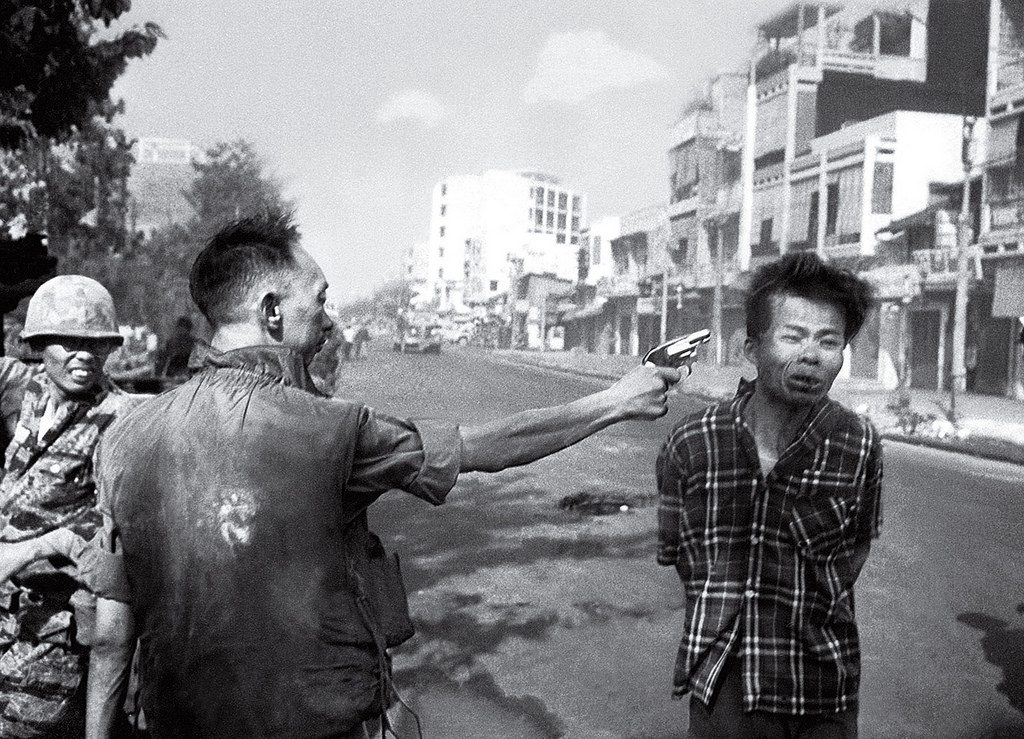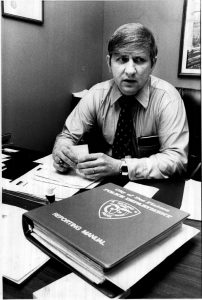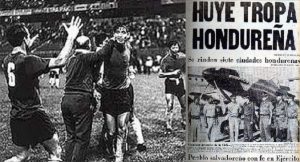Winner of the Fall 2018 StMU History Media Award for
Article with the Best Use of Images
Article with the Best Introduction
The year was 1968. The month of January was almost over and “Tet,” the Vietnamese Lunar New Year, was about to begin. By now, Vietnam had been embroiled for years in a civil war. North Vietnam was under the leadership of a Communist government and South Vietnam was under the leadership of a government that was backed by West. The start of Tet in 1968 was used to launch a huge offensive by the Vietcong in which coordinated attacks took place all over South Vietnam to destabilize the region and push the United States to withdraw.1
The United States‘ intervention in Vietnam began in 1965, a year after the unwarranted attacks by North Vietnam on United States‘ Destroyer ships in the Gulf of Tonkin. By 1967, the number of American troops on the ground surged.2 Despite being involved in this conflict halfway across the globe, the war did not seem so distant with the steady stream of footage and photographs from the front-lines directly to living rooms all over America. In this regard, Vietnam was unique for being one of the first wars to be filmed and photographed extensively.3 The work done by journalists in Vietnam allowed the world to see what was happening in Vietnam firsthand. Among those in Vietnam documenting the war was Eddie Adams.
Eddie Adams had been involved with photography since an early age. He had been a photographer for his high school newspaper and had done some photography work for weddings. Upon graduating high school, he enlisted in the United States Marine Corp. As a Marine, Adams served as a combat photographer in Korea for almost 3 years. In 1965, in what he describes as an “alcoholic haze,” Adams and a close friend decided they would go to Vietnam to document the war.4 During his time in Vietnam is when Adams took the photograph of the Saigon execution.
The day Adams shot the picture featured above was February 1st. He recalls himself and NBC journalists heading toward Cholon, a section of the city of Saigon, because they heard of a battle taking place there. Adams came upon South Vietnamese Brigadier General Nguyen Ngoc Loan executing a Vietcong soldier, in cold blood, in broad day light, in the middle of the street. Adams recalls himself and the other journalist gathering around Loan as he grabbed the soldier. Adams assumed Loan was only going to threaten the man. In the instant Adams raised his camera to snap a photo, Loan raised his pistol and executed the soldier. Loan explained after, that the Vietcong soldier had killed many Americans and allied Vietnamese soldiers.5
The photograph showed up on all major news evening broadcasts and on the front cover of newspapers all over the world the next morning.6 The execution was also recorded, but the specific angle Adams got in his photograph showed the war in an indescribable way. Peter Braestrup, one of the most versed individuals on the Tet offensive, described the picture as a “kind of ultimate horror story that you captured in living color. But in terms of information it told you almost nothing.”7 His quote could not do more justice. What the world saw was a man who was wincing before certain death. They did not know the man was a part of the Vietcong. In the photograph, he seems to be wearing civilian clothes which misleads one. The man had also recently killed allied soldiers and was found armed during martial law- an offense that justifies the use of force.8 Eddie Adams believed he had done an injustice to Loan. He explained, “General Loan was our guy. We were supporting him… believe me, the Americans did just as bad things. I just happened to see this and shoot it…”9

Despite the Johnson Administration’s attempt to win public support of the war, the images of the war painted a very different picture. Public opinion felt that the war was no longer winnable, rather it was now a matter of how America could save face. Walter Cronkite, a well-respected news-anchor and a strong supporter for the war, was among those whose opinion shifted. It was reported that President Johnson believed “if I lost Cronkite, I’ve lost America.”10 The irony of it all was that the Tet Offensive was largely a failure for the Vietcong in terms of land gained and damage inflicted, but in the end its psychological impact on how Americans believed the war to be going, led to its success.11

While this photo was taken out of context, it did provide small truths of the war. Although the war was going well, horrendous acts were being committed. Eddie Adams and many others were able to expose the world to the atrocious acts being committed during the war. Nick Ut’s photo of a napalm strike on a village, is another photo that came to define the war. Ut’s photograph captured the moment children run away in horror from napalm strikes on their village.12 The shattered innocence and utter despair on the childrens’ faces while soldiers seem calm provides a stark incomprehensible contrast that pulls at the heart. These photographs captured only instances of the war. But in the frozen state of a photograph, one is able to examine and reexamine a photograph and truly take in all its details. There was no propaganda campaign that could ever keep a just people supporting a war when they saw photographs like these.

As journalist, Adams and the others were simply doing their jobs. Horst Faas explained about documenting the war, “I don’t think we influenced the war… [he believed simply that the job of journalist was to] record the suffering, the emotions and the sacrifices of both the Americans and the Vietnamese…”13 Their work allowed for the false reality America was living to fall apart. As Americans lived, worked, and played, the very basic rights all humans are entitled to were violated by both sides. As such, Americans responded. In 1973, with public support overwhelmingly against the war in Vietnam, the United States signed the Paris Agreement that led to the withdrawal of all American troops.14 The involvement of the United States in Vietnam continues to be synonymous with some of the most appalling violations of human rights, not only violations against Vietnamese civilians burned alive with napalm or killed slowly through cancer with massive exposure to Agent Orange, but also of the atrocities committed or witnessed by US forces. In addition, all US Soldiers exposed to Agent Orange in indirect ways as when combat medics who worked at Clark Air Force Base (Philippines Islands) received the US soldiers injured in Vietnam who had been evacuated by air. These combat medics received soldiers injured in the field in Vietnam covered in Agent Orange with no protocol for decontamination for the injured nor for themselves as medical personnel. Fifty years on and they continue to die from cancers caused by exposure to Agent Orange. While the US left in 1973, the human suffering due to human rights violations done then, continues today. These images changed the public opinion and changed the course of history even when they may have not saved all those involved at the time, they avoided even greater damages and loss of life, for that we are grateful to these powerful images.
- Patrick Hagopian, America in the World, 1776 to the Present: A Supplement to the Dictionary of American History (Farmington Hills, MI: Charles Scribner’s Sons, 2016), 752. ↵
- James H. Willbanks, Vietnam War: A Topical Exploration and Primary Source Collection (Santa Barbara, CA: ABC-CLIO, 2017), 133, 183. ↵
- James H. Willbanks, The Tet Offensive: A Concise History (New York: Columbia University Press, 2007), 5-6. ↵
- Encyclopedia of World Biography, 2nd Edition, s.v. “Eddie Adams” (Detroit: Gale, 2005), 4. ↵
- Encyclopedia of World Biography, 2nd Edition, s.v. “Eddie Adams” (Detroit: Gale, 2005), 4. ↵
- David Culbert, Television’s Visual Impact on Decision-Making in the USA, 1968: The Tet Offensive and Chicago’s Democratic National Convention, Journal of Contemporary History Vol. 33 (1998): 421. ↵
- David Culbert, Television’s Visual Impact on Decision-Making in the USA, 1968: The Tet Offensive and Chicago’s Democratic National Convention, Journal of Contemporary History Vol. 33 (1998): 424. ↵
- David Culbert, Television’s Visual Impact on Decision-Making in the USA, 1968: The Tet Offensive and Chicago’s Democratic National Convention, Journal of Contemporary History Vol. 33 (1998): 423, 426-428 ↵
- Encyclopedia of World Biography, 2nd Edition, s.v. “Eddie Adams” (Detroit: Gale, 2005), 4-5. ↵
- James H. Willbanks, Vietnam War: A Topical Exploration and Primary Source Collection (Santa Barbara, CA: ABC-CLIO, 2017), 255. ↵
- James H. Willbanks, Vietnam War: A Topical Exploration and Primary Source Collection (Santa Barbara, CA: ABC-CLIO, 2017), 249 ↵
- Hal Buell, The Napalm Girl, Vietnam 25, no. 1 (June 2012), 36-39. ↵
- Deborah Stadler, Frontline Focus, Military History 33, no. 6 (March 2017), 56-61. ↵
- “12 Address to the Nation Announcing Conclusion of an Agreement on Ending the War and Restoring Peace in Vietnam. January 23, 1973.” 2001. American Reference Library – Primary Source Documents, (January, 1.) ↵



188 comments
Mariah Cavanaugh
Congratulations on your nominations in multiple categories, they are well deserved. The photographs that you chose played pivotal roles in the war. Those photographs conveyed the atrocities taking place better than any article could. I recently watched a speech given by Phan Thi Kim Phuc, the napalm girl shown running away from the village. She is 55 years old now and her speech was both heartbreaking and beautiful. Good job and good luck!
Sabrina Hsu
It’s amazing how a picture can really have so much meaning behind it and can have such a great impact. If he hadn’t taken that picture who knows how long it would have taken for people to see what was really going on. This whole article was written very well and I’m glad I read it and became more informed on these events and how pictures like this had an impact on the war.
Robert Freise
The Vietnam War had drawn some political conservancy with the United States in the early 50s and the 60s. The pictures presented in this article really show how nasty and cruel war can be. Many believe that the United States should have not went into the Vietnam War and many believe it was a complete disaster. The usage of great imagery and the title of the article is very on point. Also I love how powerful the images are also.
Maggie Amador
I was not aware that the Vietnam war was one of the first wars photographed and filmed. These images are undoubtedly powerful and I can completely understand how this photo had the potential to end the war in Vietnam. The saying that a photo is worth a thousand words is ridiculously true, but whether those words carry the same meaning as the photographer intended is left up to question. Either way, these pictures are still extremely influential and powerful, and give insight to the past I hope we never have to repeat.
Richard Morales
Great article about the tragedies of war and importance of photographic evidence. These pictures prove that war is hell and serve to remind us of the terrors associated with the Vietnam war. These images were part of the first televised American war and for the first time US civilians got to see the damage that was previously only viewed by soldiers and citizens of war torn nations. Overall great read, congratulations on your well deserved nomination.
Faten Al Shaibi
congratulation to be in the finals, your choice of pictures was very impressive and appropriate for the article, I really love what you did. As the professor told us today in his last lecture , the war is easy to start, but it is difficult for peace to reign again. The war is the worst that can pass on human beings. I hope peace prevails in the world and we never live in wars. I wish you good luck and all the candidates for the finals.
Crystal Baeza
This article was well written and informative. The pictures definitely spoke for themselves and showed how tragic the Vietnam war truly was. I found it interesting how it was the first war to be documented with film and photography. I can’t even image the emotions Adams felt when taking his famous shot. If it wasn’t for Adams and other photographers, people wouldn’t have been able to see for them selves the damages done to many innocent lives. Congratulations on your nominee! The images chosen were extremely powerful and showed deep emotions.
Engelbert Madrid
It’s incredible on how images, illustrations, and photographs can express more than words can. For example, the image of the innocent Vietnamese children running for help is one of the most touching images of the Vietnam War. As a result, heartbreaking images of the Vietnam War made many Americans realized that this war was not necessary. I enjoyed reading this article, and the writer made it interesting by using significant images of the war to express remorse for the loss of innocent people.
Greyson Addicott
This article is a great ode to visual propaganda. The picture certainly moved the hearts and minds of the American people, and only increased the ferocity of the anti-war movement inside of the United States. The war itself was a tragedy for all sides, and the protesters had finally found a precious image that told the public everything that they simply couldn’t. Of course, while the influence that this photograph had on the United States did not specifically spark change, it still angered the majority of the citizens.
Julissa Cantu
The Vietnam War was truly horrid events that conspired due to the horrible decisions of the American government, however, it is a great example as to how modern technology can shape the general public’s view on anything. America saw it recently with the 2016 presidential election but Vietnam was truly the first true instance of such a feat. Sanchez’s does an amazing job in structure though I believe he should have laid out his evidence in a more concise manner.